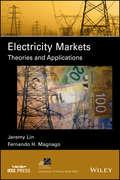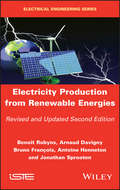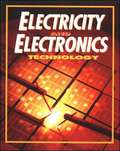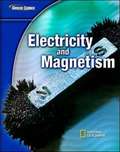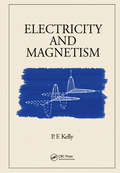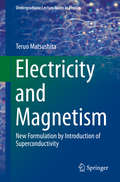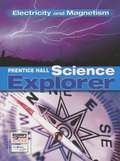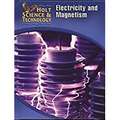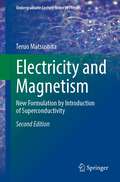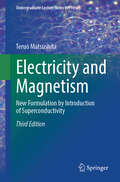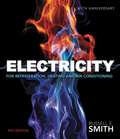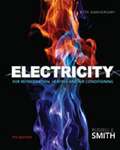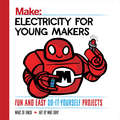- Table View
- List View
Electricity Markets: Theories and Applications (IEEE Press Series on Power Engineering)
by Jeremy Lin Fernando H. MagnagoA comprehensive resource that provides the basic concepts of electric power systems, microeconomics, and optimization techniques Electricity Markets: Theories and Applications offers students and practitioners a clear understanding of the fundamental concepts of the economic theories, particularly microeconomic theories, as well as information on some advanced optimization methods of electricity markets. The authors—noted experts in the field—cover the basic drivers for the transformation of the electricity industry in both the United States and around the world and discuss the fundamentals of power system operation, electricity market design and structures, and electricity market operations. The text also explores advanced topics of power system operations and electricity market design and structure including zonal versus nodal pricing, market performance and market power issues, transmission pricing, and the emerging problems electricity markets face in smart grid and micro-grid environments. The authors also examine system planning under the context of electricity market regime. They explain the new ways to solve problems with the tremendous amount of economic data related to power systems that is now available. This important resource: Introduces fundamental economic concepts necessary to understand the operations and functions of electricity markets Presents basic characteristics of power systems and physical laws governing operation Includes mathematical optimization methods related to electricity markets and their applications to practical market clearing issues Electricity Markets: Theories and Applications is an authoritative text that explores the basic concepts of the economic theories and key information on advanced optimization methods of electricity markets.
Electricity Production from Renewable Energies
by Benoît Robyns Jonathan Sprooten Arnaud Davigny Antoine Henneton Bruno FrançoisSince the early 2000s, energy and environmental issues have led to a marked increase in electricity production from renewable energy sources. Sustainable development and concern for future generations constantly challenge us to develop new technologies for energy production, as well as new energy usage patterns. Their rapid emergence can make these new technologies difficult to understand and can thus affect perceptions.Directed towards a broad audience, this book contributes to a better understanding of new electricity generation technologies. It presents the issues, sources and means of conversion using a general approach, while developing scientific concepts to understand their main technical characteristics.This revised and extended second edition presents current data characterizing the development of these renewable energy sources, covering emerging photovoltaic and tidal technologies, offshore wind power, and recent developments on the integration of these sources into the electricity grid. The emergence of self-production and self-consumption is also addressed. In addition, several exercises provide the reader with an opportunity to evaluate their understanding.
Electricity and Electronics Technology (Seventh Edition)
by McGraw-Hill Book Company Staff Marshall L. Schmitt Charles G. Carter Peter BubanHands-on practice and theory in one introductory text!
Electricity and Electronics for Renewable Energy Technology: An Introduction (Power Electronics and Applications Series)
by Ahmad Hemami<p>Electricity and Electronics for Renewable Energy Technology: An Introduction provides a foundational understanding of electricity and the methods and devices specific to electricity from renewable sources. The book begins with a brief explanation of the necessary mathematics and then: <p> <li>Addresses the basics of electricity and relationships, motors and generators, transformers, and networks and distribution <li>Tackles the key concepts associated with electronics, diodes and transistors, switching devices, and power converters <li>Covers digital electronics from number systems and logic circuits to encoders and decoders <li>Explores advanced subjects such as reactive power and the operation of a transistor</li> <p> <p>A lab manual and PowerPoint presentation are available with qualifying course adoption. <p>Featuring extensive review questions and practice problems at the end of each chapter, Electricity and Electronics for Renewable Energy Technology: An Introduction instills an essential knowledge of electricity and electronics required for work with renewable energy.</p>
Electricity and Electronics for Renewable Energy Technology: An Introduction (Power Electronics and Applications Series)
by Ahmad HemamiElectricity and Electronics for Renewable Energy Technology: An Introduction provides a foundational understanding of electricity and the methods and devices specific to electricity from renewable sources. The book begins with a brief explanation of the necessary mathematics and then: Addresses the basics of electricity and relationships, motors and generators, transformers, and networks and distribution Tackles the key concepts associated with electronics, diodes and transistors, switching devices, and power converters Covers digital electronics from number systems and logic circuits to encoders and decoders Explores advanced subjects such as reactive power and the operation of a transistor A lab manual and PowerPoint presentation are available with qualifying course adoption. Featuring extensive review questions and practice problems at the end of each chapter, Electricity and Electronics for Renewable Energy Technology: An Introduction instills an essential knowledge of electricity and electronics required for work with renewable energy.
Electricity and Magnetism
by Dr Munir H. Nayfeh Dr Morton K. BrusselThis outstanding text for a two-semester course is geared toward physics undergraduates who have completed a basic first-year physics course. The coherent treatment offers several notable features, including 300 detailed examples at various levels of difficulty, a self-contained chapter on vector algebra, and a single chapter devoted to radiation that cites interrelationships between various analysis methods. Starting with chapters on vector analysis and electrostatics, the text covers electrostatic boundary value problems, formal and microscopic theories of dielectric electrostatics and of magnetism and matter, electrostatic energy, steady currents, and induction. Additional topics include magnetic energy, circuits with nonsteady currents, Maxwell's equations, radiation, electromagnetic boundary value problems, and the special theory of relativity. Exercises appear at the end of each chapter and answers to odd-numbered problems are included in one of several helpful appendixes.
Electricity and Magnetism
by Edward M. PurcellFor 50 years, Edward M. Purcell's classic textbook has introduced students to the world of electricity and magnetism. The third edition has been brought up to date and is now in SI units. It features hundreds of new examples, problems and figures and contains discussions of real-life applications. The textbook covers all the standard introductory topics, such as electrostatics, magnetism, circuits, electromagnetic waves and electric and magnetic fields in matter. Taking a non-traditional approach, magnetism is derived as a relativistic effect. Mathematical concepts are introduced in parallel with the physics topics at hand, making the motivations clear. Macroscopic phenomena are derived rigorously from microscopic phenomena. With worked examples, hundreds of illustrations and nearly 600 end-of-chapter problems and exercises, this textbook is ideal for electricity and magnetism courses. Solutions to the exercises are available for instructors at www. cambridge. org/9781107014022.
Electricity and Magnetism
by Glencoe Mcgraw-HillDiscover the Flexibility to Teach Science Your Way!. "Glencoe Science: Electricity and Magnetism," a module in the Glencoe Science 15 book series, provides students with accurate and comprehensive coverage of middle school National Science Education Standards. Concepts are explained in a clear, concise manner, and are integrated with a wide range of hands-on experiences, critical thinking opportunities, real-world applications, and connections to other sciences and to non-science areas of the curriculum. Co-authored by National Geographic, unparalleled graphics reinforce key concepts. A broad array of print and technology resources help differentiate and accommodate all learners. The modular approach allows you to mix and match books to meet your specific curriculum needs.
Electricity and Magnetism
by P.F. KellyThe final volume in a three-part series, Electricity and Magnetism provides a detailed exposition of classical electric and magnetic fields and analyses of linear electric circuits. The book applies the principles of classical mechanics to systematically reveal the laws governing observed electric and magnetic phenomena. The text culminates in Maxw
Electricity and Magnetism
by Teruo MatsushitaThe author introduces the concept that superconductivity can establish a perfect formalism of electricity and magnetism. The correspondence of electric materials that exhibit perfect electrostatic shielding (E=0) in the static condition and superconductors that show perfect diamagnetism (B=0) is given to help readers understand the relationship between electricity and magnetism. Another helpful aspect with the introduction of the superconductivity feature perfect diamagnetism is that the correspondence in the development of the expression of magnetic energy and electric energy is clearly shown. Additionally, the basic mathematical operation and proofs are shown in an appendix, and there is full use of examples and exercises in each chapter with thorough answers.
Electricity and Magnetism (Dover Books on Physics)
by Edson Ruther PeckThis classic 1953 text for advanced undergraduates has been used by generations of physics majors. Requiring only some background in general physics and calculus, it offers in-depth coverage of electricity and magnetism and features problems at the end of each chapter.Starting with an introductory chapter on electrostatics, the treatment advances to the electrostatic field of free charges; dielectric theory; electrostatic energy, force, and capacitance; electric current; and direct-current circuits. Subsequent topics include steady-state magnetism, electromagnetic induction, magnetic properties of matter, transient currents, analysis of alternating-current circuits, Maxwell's equations, and electromagnetic waves.
Electricity and Magnetism (Interactive Science, Chapter #9)
by Michael J. Padilla Don Buckley Zipporah Miller Kathryn Thornton [et al.]Learn more about how electricity and magnetic energy transform and move objects.
Electricity and Magnetism (Prentice Hall Science Explorer)
by Camille L. WainwrightPrentice Hall Science Explorer, Electricity and Magnetism by Camille L. Wainwright.
Electricity and Magnetism (Prentice Hall Science Explorer)
by Camille L. WainwrightScience textbook for middle school
Electricity and Magnetism (Prentice Hall Science Integrated Learning System)
by Prentice-Hall StaffA science book.
Electricity and Magnetism for Mathematicians
by Thomas A. GarrityThis text is an introduction to some of the mathematical wonders of Maxwell's equations. These equations led to the prediction of radio waves, the realization that light is a type of electromagnetic wave, and the discovery of the special theory of relativity. In fact, almost all current descriptions of the fundamental laws of the universe can be viewed as deep generalizations of Maxwell's equations. Even more surprising is that these equations and their generalizations have led to some of the most important mathematical discoveries of the past thirty years. It seems that the mathematics behind Maxwell's equations is endless. The goal of this book is to explain to mathematicians the underlying physics behind electricity and magnetism and to show their connections to mathematics. Starting with Maxwell's equations, the reader is led to such topics as the special theory of relativity, differential forms, quantum mechanics, manifolds, tangent bundles, connections, and curvature.
Electricity and Magnetism: Holt Science & Technology Short Course N
by Holt Rinehart Winston StaffThe book has a Reading Warm-Up at the beginning of every section provides the student with the section's objectives and key terms. A Reading Strategy at the beginning of every section provides tips to help students organize and remember the information covered in the section.
Electricity and Magnetism: New Formulation by Introduction of Superconductivity (Undergraduate Lecture Notes in Physics)
by Teruo MatsushitaThis book is a very comprehensive textbook covering in great depth all the electricity and magnetism. The 2nd edition includes new and revised figures and exercises in many of the chapters, and the number of problems and exercises for the student is increased.In the 1st edition, emphasis much was made of superconductivity, and this methodology will be continued in the new edition by strengthening of the E-B analogy. Many of the new exercises and problems are associated with the E-B analogy, which enables those teaching from the book to select suitable teaching methods depending on the student’s ability and courses taken, whether physics, astrophysics, or engineering.Changes in the chapters include a detailed discussion of the equivector-potential surface and its correspondence between electricity and magnetism. The shortcomings of using the magnetic scalar potential are also explained. The zero resistivity in a magnetic material showing perfect diamagnetism can be easily proved.This textbook is an ideal text for students, who are competent in calculus and are taking physics, astrophysics, or engineering at degree level. It is also useful as a reference book for the professional scientist.
Electricity and Magnetism: New Formulation by Introduction of Superconductivity (Undergraduate Lecture Notes in Physics)
by Teruo MatsushitaThis comprehensive textbook covers electricity and magnetism in great depth, with the 3rd edition offering updated descriptions of electromagnetic phenomena to help students achieve a more thorough understanding of the subject. In the 1st edition, superconductivity was emphasized, a focus that continued in the 2nd edition, which strengthened the E-B analogy by comparing equipotential surfaces in electricity to equivector potential surfaces in magnetism. The 3rd edition introduces the concept of mean magnetic flux, which aids in determining inductance from magnetic energy. It also demonstrates how vector potential can be directly used to calculate electromotive force. A unique phenomenon is presented when applying current to a superconducting transmission line, where the induced electric field's vector potential is perpendicular to the current. This deviation from common equations can still be explained through Maxwell&’s theory, leading to the correct solution. For a more in-depth grasp of electricity and magnetism, students are encouraged to use Exercises in Electricity and Magnetism by the same author, which offers 400 practice problems. This textbook is ideal for advanced students of physics, astrophysics, or engineering, as well as a valuable reference for professional scientists.
Electricity for Refrigeration, Heating, and Air Conditioning
by Russell E. SmithThe ideal book for students and beginning technicians, this Ninth Edition of ELECTRICITY FOR REFRIGERATION, HEATING, AND AIR CONDITIONING provides readers with the basic electrical principles necessary to understand today's modern control systems. The book's practical approach allows readers to focus exclusively on the electronics information they will use in the field, without bogging them down in unnecessary theory. The book focuses on helping readers master systematic diagnosis and troubleshooting methods and procedures that will enable them to become highly-skilled, professional HVAC-R service technicians.
Electricity for Refrigeration, Heating, and Air Conditioning, 9th Edition
by Russell E. SmithThe Lab Manual is a valuable tool designed to enhance your students' lab experience. Lab activities, objectives, materials lists, step-by-step procedures, illustrations, and review questions are commonly included.
Electricity for Young Makers: Fun and Easy Do-It-Yourself Projects
by Marc De VinckLearning to be a maker has never been more fun. Lavishly illustrated with cartoons and drawings, this book guides the reader through six hands-on projects using electricity. Discover the electrical potential lurking in a stack of pennies - enough to light up an LED or power a calculator! Launch a flying LED copter into the air. Make a speaker that plays music from an index card. Build working motors from a battery, a magnet, and some copper wire. Have fun while learning about and exploring the world of electricity. The projects in this book illuminate such concepts as electric circuits, electromagnetism, electroluminescence, the Lorentz force and more. You'll be amazed by the results you get with a handful of simple materials.
